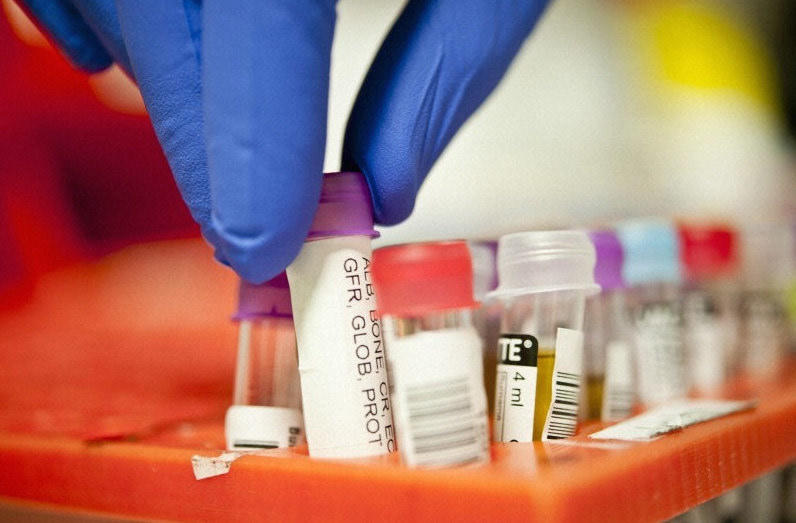For blood cancer patients, tissue biopsies are yet another unpleasant part of their treatment cycle. But from late 2017, the 12,000 Australians diagnosed every year with blood cancers like leukaemia may no longer need to undergo such frequent biopsies. A simple blood test will be able to monitor their progress instead.

The new test, known as a ‘liquid biopsy’, analyses trace amounts of cancer DNA found in patients’ blood. Based on research published in both Nature Communications and Blood, it is the result of ten years of work by Associate Professor Sarah Jane Dawson, who is based at the Peter MacCallum Cancer Centre and the University of Melbourne. It builds on her earlier work at the University of Cambridge, where she discovered the potential of analysing cell-free DNA for treating solid malignancies, particularly breast cancer.
“Most cancers shed small amounts of DNA into the bloodstream,” explains Associate Professor Dawson. “This is not present in the cellular constituents of blood, and is known as cell-free DNA. We have developed technology that enables us to isolate it, and then analyse it for cancer-causing mutations.”
All the patient has to do is provide a simple blood sample. The liquid biopsy, or circulating tumour DNA test (ctDNA test), is then conducted in the lab. Clinicians will take the test at the point of diagnosis, to provide a clearer picture of the tumour, and to act as a baseline measurement that can then be tracked through treatment.
“As well as being less invasive, the test may give clinicians more precise information than current biopsies on the cancer’s response to treatment,” says Associate Professor Dawson. “So we can very nimbly act on what we learn – if, for example, a patient relapses or fails to respond to a particular therapy, we can adjust their treatment accordingly.”
But, traditional tissue biopsies will remain important at the point of diagnosis.
“The new test is not a substitute for a bone marrow or lymph node biopsy at the point of diagnosis,” says Associate Professor Dawson.
“It is still important to see the cancer cells down the microscope to diagnose a patient’s condition. However, the new test does mean we can reduce the number of biopsies a patient experiences through their treatment, and we can also provide more effective treatment, based on the information it provides.”
Because single tissue biopsies from the bone marrow or lymph nodes only allow for a select few cells from the cancer to be examined, they can’t provide a complete picture of the whole tumour. The new test will help provide a more holistic picture of what is happening.
“The results of the new test are more precise because cancer cells from all disease sites within the body shed their DNA into the bloodstream, providing a much more complete picture of the state of the tumour,” says Associate Professor Dawson.
Associate Professor Dawson has already developed circulating tumour DNA tests for breast and other cancer types, which now guide the treatment of some 500 patients in her research program at Peter Mac. Since publishing her initial findings in the New England Journal of Medicine and Nature in 2013, she has expanded her work on cell-free DNA into other cancers including melanoma, lung cancer and now blood cancers.
The team are optimistic the circulating tumour DNA test for blood cancers will transition into the clinical arena in 2017.
“We want to see this become a useful clinical test,” says Associate Professor Dawson. “From late 2017 we will be offering this as a diagnostic service for patients around the country. It will make a big difference to their experience of treatment.”
Associate Professor Dawson is supported by the Victorian Cancer Agency and the National Breast Cancer Foundation.
This research was supported by the National Health and Medical Research Council of Australia; Leukaemia and Lymphoma Society USA; Victorian Cancer Agency; National Breast Cancer Foundation; Leukaemia Foundation Australia; Snowdome Foundation; and the Haematology Society of Australia and New Zealand. Core technologies for the research are supported by the Australian Cancer Research Foundation and Peter MacCallum Cancer Centre.
Banner image: Human blood with red blood cells, T cells (orange) and platelets (green), ZEISS Microscopy / Flickr
This article was first published on Pursuit. Read the original article.